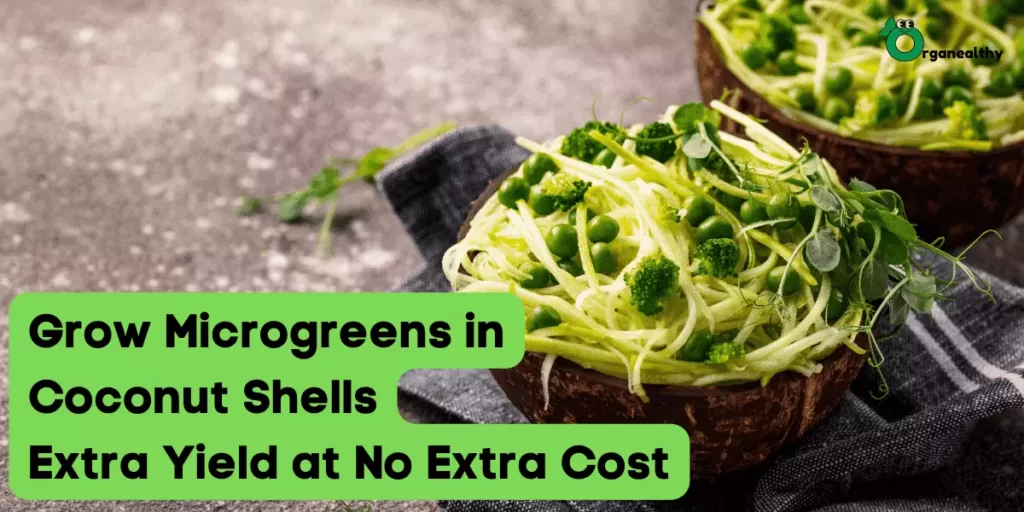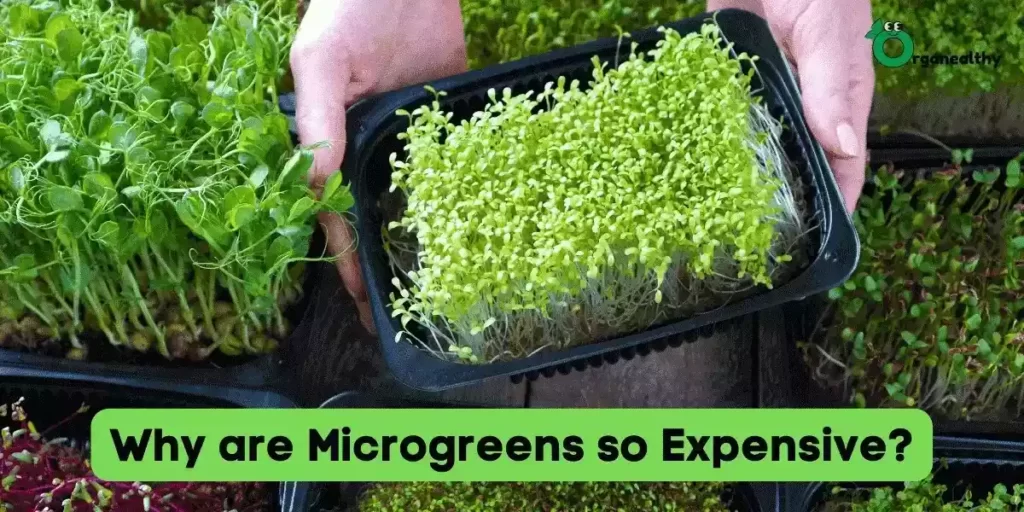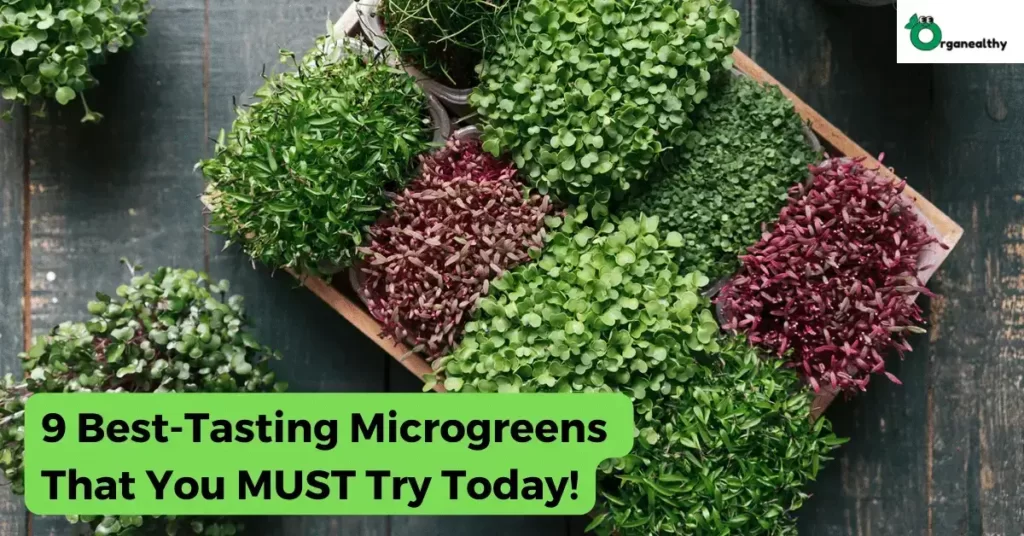Red cabbage microgreens can reduce the risk of cardiovascular disease immensely and we think that’s more than enough a reason to start including them in your meals.
Microgreens have started to become a recent mainstream item in the early 2010s, their beauty and their nutritional value are suitable for all age groups. Also, they are so easy to grow and harvest. So, today we are going to show you how to grow red cabbage microgreens at your home hassle-free.
Red cabbage microgreens have quite many health benefits so you must make them a part of your daily diet. In doing so, you’ll not only add nutrition and colour to your food but also keep so many diseases at bay, now who wouldn’t want that?!
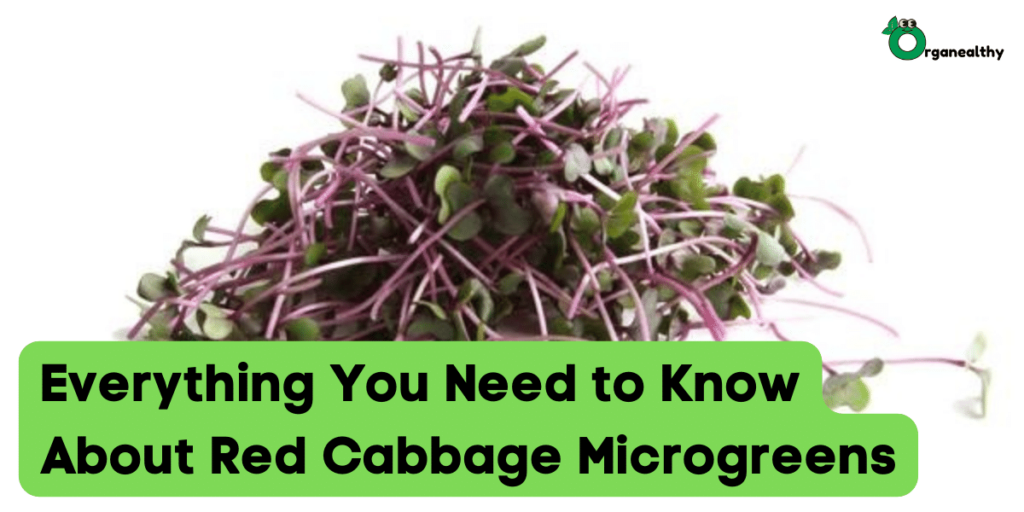
Red cabbage microgreens are really easy to grow and harvest, so easy that you require minimal effort in growing them. We are not kidding, you can grow these miniature veggies just about anywhere from professional fields to your backyards, great, isn’t it?
In this article, we would tell you not only how to grow red cabbage microgreens, but also why they are important for your health. In this article, we’ll give you step-by-step instructions on the easiest way to grow them so you have a wonderful time growing the microgreens without any complexities. Let’s dive in then, shall we?
A Step-By-Step Guide on How to Grow Red Cabbage Microgreens
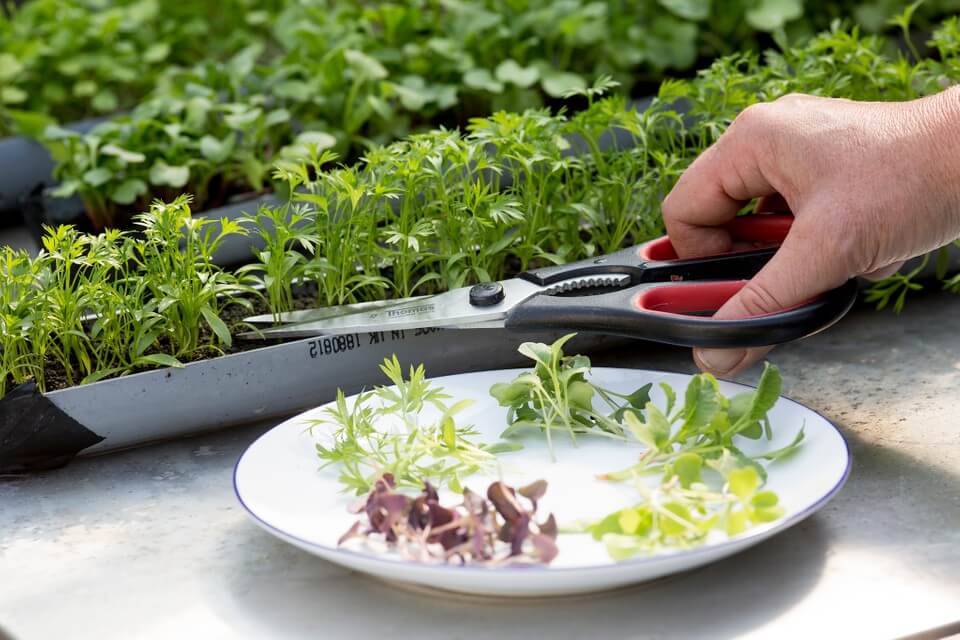
Wondering whether to grow red cabbage, regular cabbage or maybe a mixture of both?
The choice is yours, but keep in mind that red cabbage bags a lot more nutrients, owing to its red colour. You can grow any variety you fancy, and decide on which one you like the most!
Let’s discuss the step-by-step process of how to grow red cabbage microgreens.
Preparing Your Growing Space
You will need a growing tray. A growing tray if10×20 is a great size, to begin with. You should also maintain a proper growing medium and keep the soil moist most of the time. You can use whatever you’re preferred potting mix is or you can even use coconut coir. Either works perfectly well.
The roots depend on the depth of the soil so if you don’t plan on growing bigger plants then we would say a thin layer of soil will suffice.
Planting
Sprinkling about 4 teaspoons of red cabbage seeds across your growing tray of 10″x20″ size would be adequate. Make sure that the soil is placed properly and is sufficiently moist first. We advise you to cover your tray for the first 2 to 3 days and keep them somewhere with the temple around 60° to 70° F.
Growing & Watering
The seeds will germinate within two or three days. For these first few days, you’ll need to do nothing except keeping the soil moist. Although, when the plants start to sprout, you would have to moisten the growing medium every day without fail.
Remember to drain out all or any excess water from the tray if you don’t have drainage or holes at the bottom, it won’t do good to drown our precious microgreens.
When the germination is complete, you can remove the cover from the tray and place it somewhere where it can get a soft natural light. But again, make sure the soil is the most, this is the most crucial thing to keep an eye on.
Harvesting
The microgreens would be ready to be harvested in the next 5 to 14 days. A little wonderful thing about them is that their flavour changes daily. So, try out all the different flavors you get and be the judge of which tastes the best.
How would you know that the cabbage is ready to be harvested? Quite easy, look out for open leaves. Also, make sure to stop watering the plants at least 8 to 12 hours before harvesting to balance the moisture content and also check the risk of molding.
For harvesting, all you have to do is cut them just above the growing media and you’re free to have them however you want.
Storage
We would recommend having them fresh as the taste is heavenly and it retains most of the nutrients. But if you’re going to store them then first place them between two paper towels and let them dry for a bit. Afterwards, put the microgreens in a bag or container and plop them into the refrigerator.
You can store the harvested red cabbage microgreens in a container for 5-7 days, but make sure you don’t wash them before you put them in the refrigerator or they will become mushy and may grow mold too.
There you have it, a quick yet step-by-step procedure on how to grow red cabbage microgreens.
Simple, won’t you say so?
Red Cabbage Microgreens Seeds Per Pack
Red cabbage microgreens seeds are easily available on marketplaces like Amazon, or you can buy from dedicated microgreens seeds sellers likeTrue Leaf Market, Fresh Origins, the Chef’s Garden, and more.
Below, you will find the approximate number of red cabbage microgreens seeds that you will find in the packet.
- 1 oz ~ 6.8k seeds
- 4 oz ~ 27k seeds
- 1 lbs. ~ 108k seeds
- 5 lbs. ~ 544k seeds
- 25 lbs. ~ 2,720k seeds
Since now you know how to grow red cabbage microgreens, we’ll tell you some delicious ways to include them in your meals as well!
Red Cabbage Microgreens Recipes
We’ll be honest with you, the best way to have these after knowing how to grow red cabbage microgreens is to simply eat them raw.
Yep, you read it write.
This is due to the delicate nature of the microgreens that they are unable to withstand heavy dressings and high heat preparations as well.
You can add them as finishing details to your boring dishes and give them a dash of colour. They can be sprinkled over soups, salads, stews grilled veggies and even meat dishes.
Red cabbage complements well with citrus, nuts, garlic, shelling beans, mushrooms, ginger, fennel, shallots, apples, avocados, farro, quinoa, meats such as chicken, beef, and sausage, eggs, cheeses, and even light-bodied vinegar. Yes, you have a lot of options to enjoy your red cabbage microgreens with.
Now that we have discussed the growing method and some suggestions to enjoy your red cabbage microgreens with, we need to tell you WHY you should start eating them today. So, let’s discuss some of their nutritional facts and health benefits.
Red Cabbage Microgreens Nutrition
Red cabbage microgreens had the highest concentrations of vitamin C, but they are also filled with other essential vitamins A, E and K1. They even contain beta-carotene, potassium and iron, which are truly beneficial when you want a balanced diet. If you are trying to have a diet full of vitamins and essential minerals then this superfood can be a blessing for you.
According to a study report published by the American Chemical Society, in which the researchers studied the effects of red cabbage microgreens and mature red cabbages on mice who were obese and had a higher risk of developing cardiovascular diseases. The study affirmed that the red cabbage microgreens diet led to a reduction in weight and lowered liver cholesterol.
The study also confirmed that the microgreens diet contained more potentially cholesterol-lowering polyphenols and glucosinolates than mature cabbage. The baby plants also helped lower LDL, or “bad,” cholesterol and liver triglyceride levels in the animals.
Red Cabbage Microgreens Health Benefits

We are sure that once you get to know all these wonderful health benefits red cabbage microgreens have to offer, you’ll want to start growing and eating them as soon as possible.
So, what are we even waiting for? Let’s go!
Boosts Your Immune System
Red cabbage microgreens have such a high quantity of antioxidants, carotenoids, vitamins K1 & C, and potassium that they have the proficiency to improve the effectiveness of your immune system and deduct inflammation in your body.
Gastro Distress
A compound in red cabbage, called S-Methylmethionine can decrease gastro distress drastically and actually help to abolish peptic ulcers. It will also soothe the lining of your stomach and safeguard it from future issues!
Reduced Cancer Risk
There are more than 30 anthocyanins in red cabbage microgreens. They give the cabbage its colour and can assist in reducing the likelihood of cancer cells appearing while improving brain and heart health.
It also contains a compound called glucosinolates which can actually hinder the growth of cancer cells without influencing normal cells.
Alzheimer’s
Earlier analysis suggests that cabbage microgreens could be effective in staving off the development of Alzheimer’s; that’s a favorable result. The research on the health benefits of microgreens, in general, is limited to the studies done until now, hopefully, more research will verify these findings in the future.
Reduces the Risk of Cardiovascular Diseases
According to a study published on Medical News Today, red cabbage microgreens showed the sign of lowering levels of low-density lipoprotein (LDL) cholesterol. LDL is the “bad” cholesterol that, if accumulated in your body, can lead to severe cardiovascular diseases, even a heart attack.
Red cabbage microgreens help to reduce this LDL cholesterol and keep you away from any sort of cardiovascular disease.
How Red Cabbage Microgreens Taste Like?
We would say that red cabbage microgreens taste much like the mature cabbage but they have a milder taste about themselves. That’s quite a great thing actually since many people don’t find the tang that cabbage leaves on their mouth pleasant.
Actually, green cabbage microgreens are much crunchier and sweeter than red cabbage microgreens!
Conclusion
We hope this article answered all the queries you had about red cabbage microgreens, we discussed a step-by-step method of growing them in your backyard, what are their nutritional values, their health benefits, and what do they taste the best with.
We bet you liked our bonus section of how you can incorporate the red cabbage microgreens with your meals and what are their health benefits.
So, now that you know the nitty-gritty about red cabbage microgreens, what’s stopping you from getting your hands dirty in the soil?
We are pretty sure you will enjoy it just as much as you did while reading our comprehensive article.



